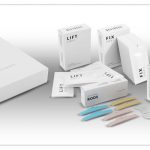Not every woman has beautiful, full-looking lips. Some of them acquiesce to this imperfection, whereas the others refuse to accept it. The latter group of ladies may turn to lipoinjection, artecoll lip augmentation, aquamid injection, goretex lip implants and lip surgery. How each of the methods look like and which one to choose? Here are pluses and minuses of them all.
LipoInjection
Fat injection allows to augment lips in the most natural way that currently exists. It depends on taking fat from the stomach area or other body part and transfer it into lips. The tissue must consist of living cells that are viable to survive in a new environment. A surgeon punctures lips with a special elastic needle and injects the appropriate doses of fat. Such fat transfer is performed with either local or general anaesthesia.
In most cases there are no complications connected with the procedure because the implant is the patient’s own tissue. With time the fat gets absorbed therefore the lifespan of the procedure lasts only 6-12 months. If needed, the procedure can be carried out again; after two or three infill sessions the effect of plumped lips might last even a few years.
For a few days the lips remain swollen and the areas of puncture might be bruised. Since the fat tissue will never get absorbed fully, lips remain slightly bigger than before the procedure, even if we resign from infill sessions.
Goretex lip implants
In order to obtain permanent lip augmentation, you can give a try to goretex (or aloderm which is a piece of processed human skin so to prevent rejection by the receiver). Goretex is an artificial material which is well-tolerated by tissues. Goretex implant is a thick thread with either a needle or small pads of material inwrought which size can be customized. The thread and the template cut out from the pads are introduced under the lip skin. The procedure is carried out with general (venous) or local anaesthesia.
The goretex lip implants deliver long-lasting effects and since the material is well-tolerated by a human organism, the risk of complications is really low. If a patient isn’t satisfied with the effects, a surgeon might remove the implants.
For a week since the procedure the lips remain swollen. At the beginning, the foreign body will be felt, however, people report getting used to it pretty fast. There is a risk of the pad displacement, for example while kissing, but its minimal.
Artecoll lip augmentation
Artecol is a blend of collagen and microscopic plexiglass particles. The blend is injected into skin after exposing the patient to local anaesthesia. The effect holds for a year. The preparation should be filled in from time to time – the frequency can’t be defined since its an individual issue.
The good side of this treatment is the immediate effect, whereas the drawbacks are the high risk of allergy reaction to artecoll and non-absorbability of plexiglass. The latter might lead to visible, tiny lumps accumulating underneath the skin, which can’t be removed.
Aquamid lip augmentation
Aquamid is a preparation made from water (97,5%) and hydrogel (2,5%). Hydrogel transforms water into jelly that is neither absorbed nor able to move. Aquamid is available in disponible syringes and injected subcutaneously due to a thin needle and local anaesthesia.
Aquamid enables permanent lip augmentation and doesn’t trigger allergic reactions. The disadvantages of the procedure include reddened and swollen lips which last for a few hours. Moreover, the patient mustn’t visit solarium for two weeks since this may encourage the preparation to absorb.
Lip surgery
The aim of lip surgery is to enlarge lips permanently or reshape them. In most cases, the edge of lip (the line when the red of lips meets the white of skin) is cut to remove a thin slice of white skin to cover it with the red skin by stretching it. The procedure finishes with stitching. The edge of lip is left with a tiny scar that can be easily covered up with either a lip pencil or permanent makeup.
The alternative to the above-mentioned procedure depends on lifting the middle part of upper lip by incising and removing a strip of skin at the base of nose. Also, lip size can be reduced by cutting out a strip of lip mucosa located in oral cavity. Both procedures are performed with general, venous or local anaesthesia.
The advantage of this procedure is definitely its permanency, and the drawback – its irreversibility. Additionally, the procedure leaves the patient with (small) scars for life.









Leave a Reply